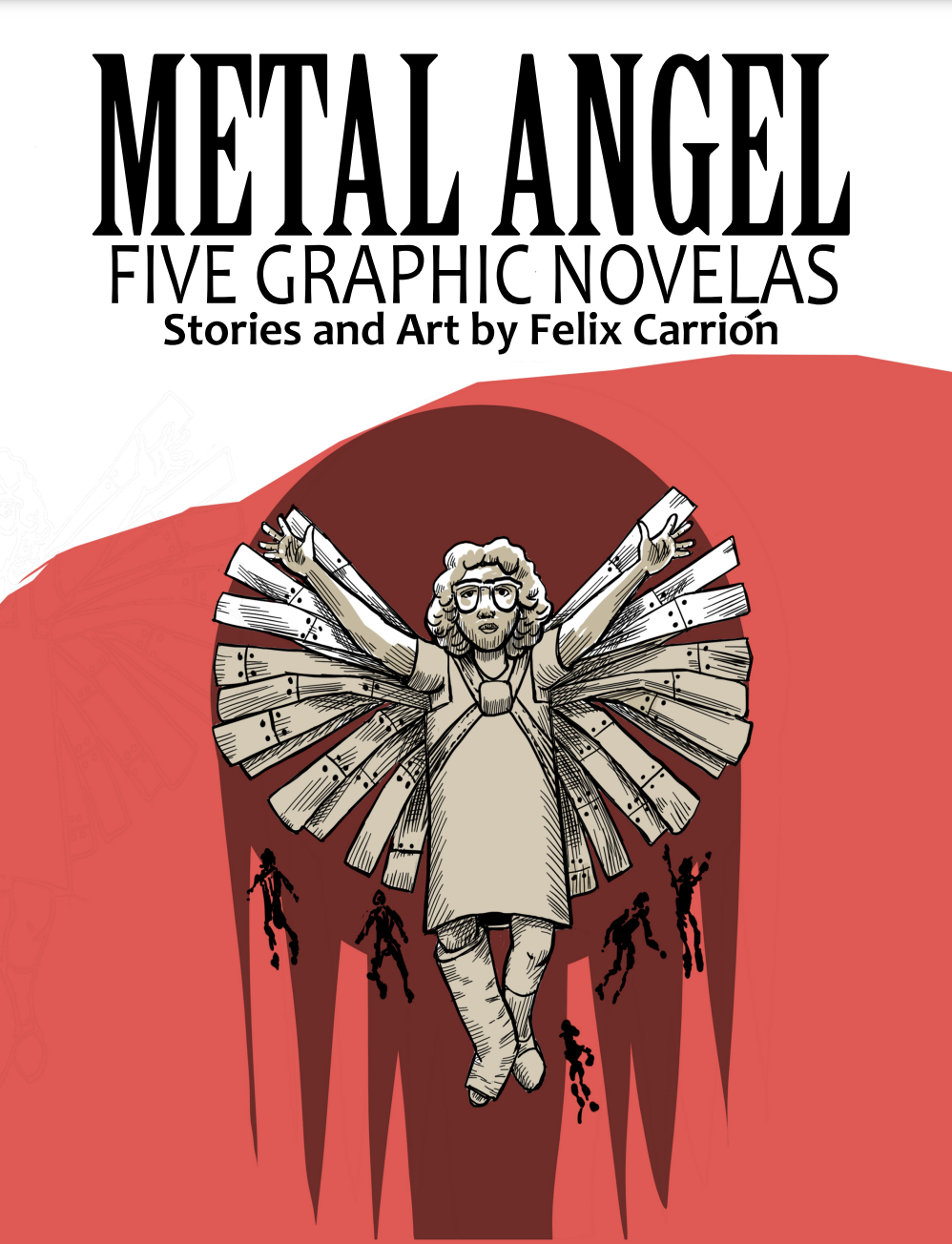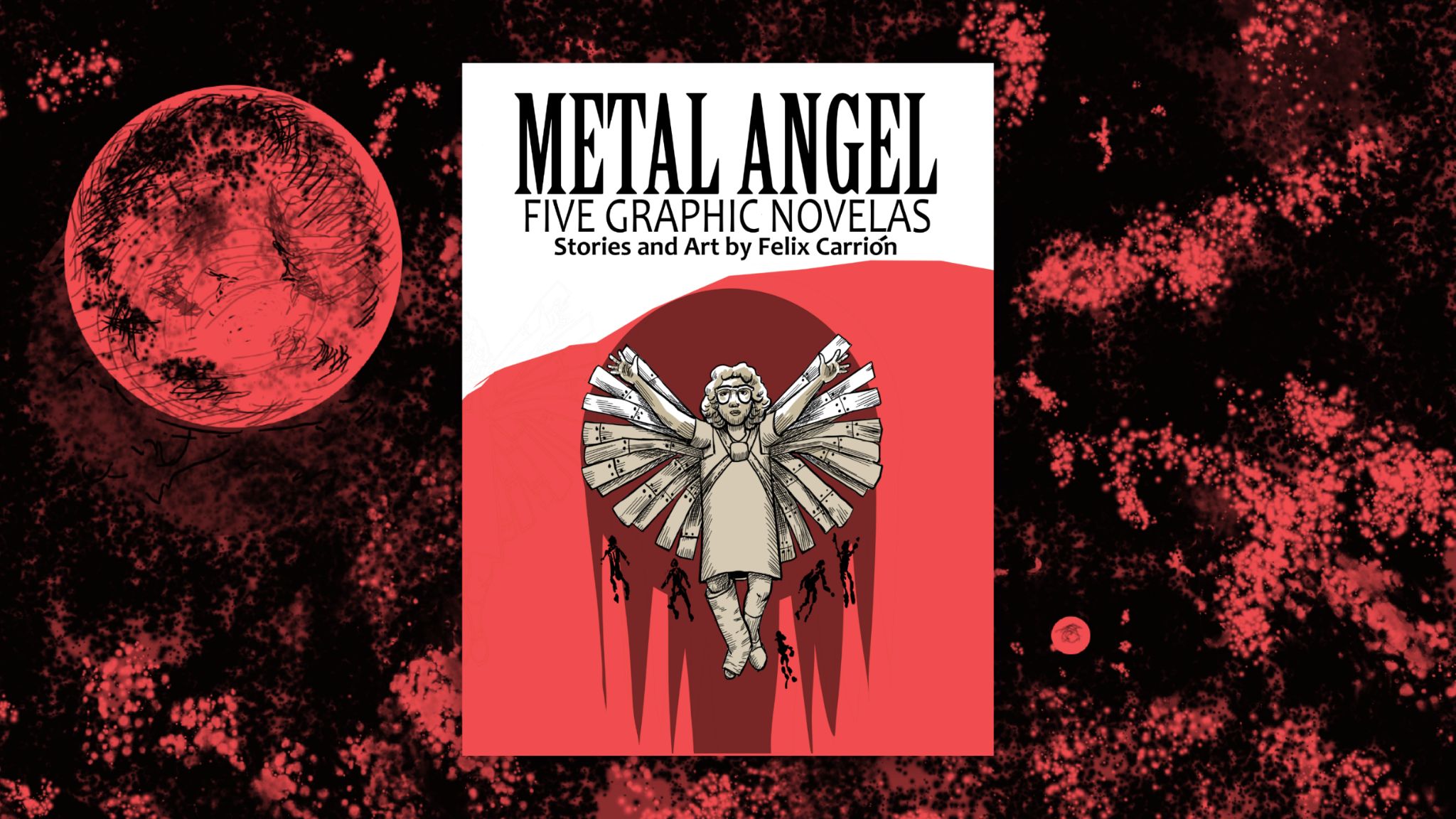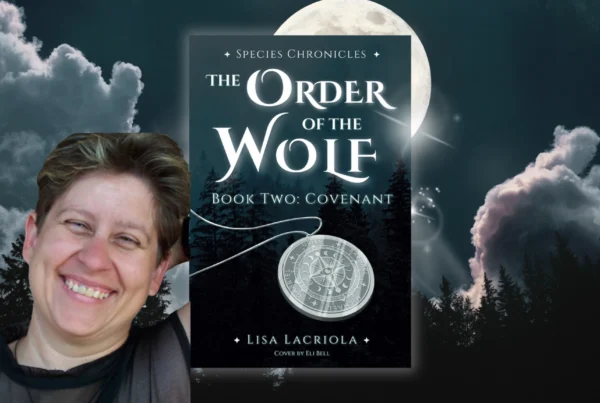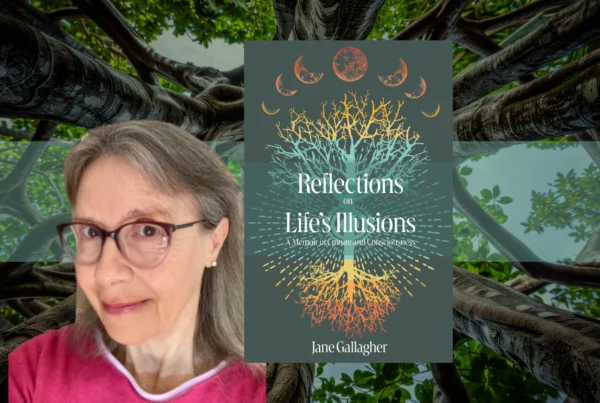Metal Angel: Five Graphic Novelas by Felix Carrión
When people think of graphic novels, they often associate the genre with flashy superhero comics or children’s stories. And while these types of titles also have their place in the world of graphic novels, they’re not the only ones. Oftentimes, graphic novels are far more profound than the public gives them credit for — and Felix Carrión‘s Metal Angel is one such example. This book contains five illustrated novellas that are sure to provoke deep thought. Little wonder, when this collection consists of ideas that have circulated in the mind of the creator for years.
You can click here to read our full review of Metal Angel. And in this Q&A, the author gives insight into what about this surreal visual journey is rooted firmly in reality, and the themes that serve as a through-line through the entire book, tying each narrative together.
Q: You mention that you’ve been developing these stories for years. What prompted you to finally bring them to fruition?
A: These ideas that incubate in my mind that usually start with a fantasy, a reverie or simply a flash but it takes me a while to put it down on paper, or nowadays, on a tablet. If these kernels grow in my mind or if return to them over time, then I know I have the beginning of a story.
Q: Was there one story that was more difficult to create than the others? Did any come to you particularly quickly?
A: Great question. I am always dealing with my internal dialogue about how much to share with the reader, but I say that Visitors in Boxcar was the most deep mostly because it deals with the Holocaust. Since I am from the post-war generation, growing up in New York with documentaries about the horrors of what was done to people, it was more palpable. It’s a story of hope nonetheless.
Q: You invite the reader to take their time with each story and ruminate on the narrative they see play out before them. What do you think is so important about taking our time with such stories?
A: Cinema has been a tremendous influence for me and we know that film makers use storyboards to create the story and the sequences. It’s natural to me to see that graphic novels are a place where these two forms of story telling meet. I ask people to look at my stories like they would scenes in a movie with little or no dialogue, to absorb the story visually. That takes a slowing down of time.
Q: You mention that the last story, Metal Angel, is somewhat autobiographical. What was it like drawing from personal experience to create such a vulnerable piece?
A: The most personal moment in that story is when the little girl is burnt on her hand by the bully as she enters the school. That was a direct scene in my life. The entire story includes the sense of fear of the world, and the value of having at least your imagination as a refuge, and one adult to foster that internal refuge, are all my story.
Q: What do you hope readers take away from these five novellas?
A: There was an entirely unifying concept in this book that ties all the stories as it speaks to the generational questions we faced: the need for hope, how we sacrifice our children or the next generation and how we are so alienation from our elders, and ourselves. In a way, these are children’s stories for adults.
Q: Is there another project you have in the works?
A: I have finished a graphic story told in two parts called Black Knife that touches on the influence of Buddhism and Buddhist literature in my outlook about life. The main characters are a way to talk about reality as we create it and the premise that in a flash that reality is destroyed and created again.
The storytelling may represent my increased skill technically using digital art tools, although it may require even more ‘reading into’ by the reader.
Buy this Book!
Barnes & Noble




